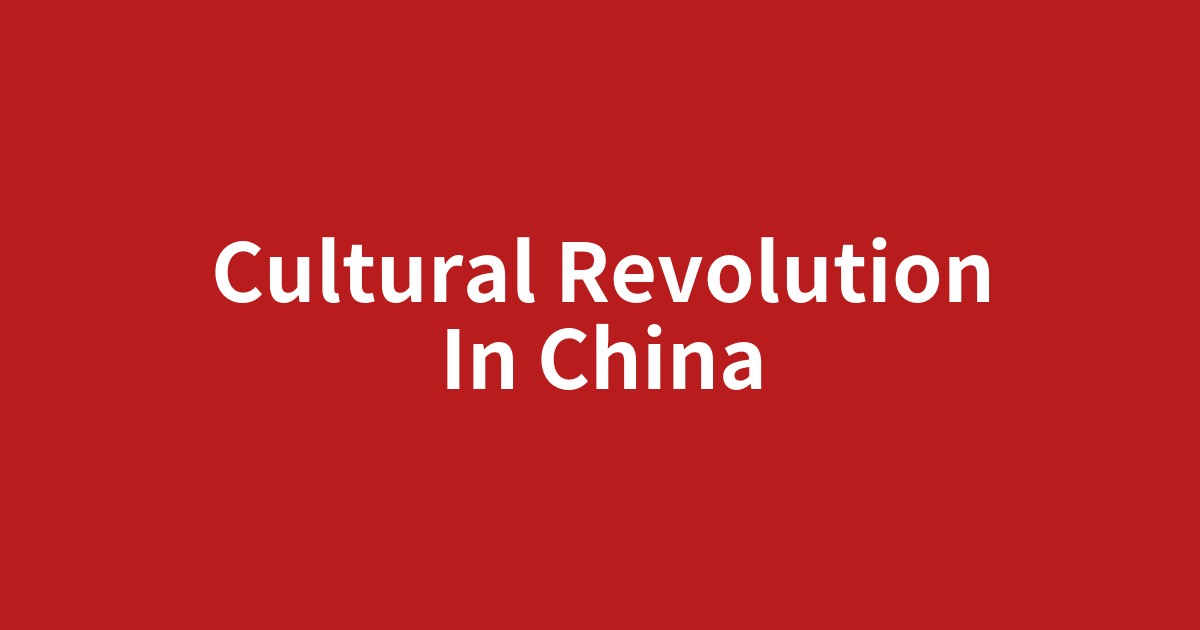このページは、歴史や文化の物語を楽しみながら、その文脈の中で重要な英単語を自然に学ぶための学習コンテンツです。各セクションの下にあるボタンで、いつでも日本語と英語を切り替えることができます。背景知識を日本語で学んだ後、英語の本文を読むことで、より深い理解と語彙力の向上を目指します。

古い文化や思想を破壊し、毛沢東への絶対的なloyalty(忠誠)を誓う若者たちが国を混乱に陥れた10年間。その狂気と、現代中国に残した傷跡。
この記事で抑えるべきポイント
- ✓文化大革命は、大躍進政策の失敗で権威が揺らいだ毛沢東が、権力基盤を再強化するために発動した大規模な政治闘争であったという側面があること。
- ✓毛沢東への熱狂的な「個人崇拝」を背景に、「紅衛兵」と呼ばれる若者たちが運動の実行部隊となり、古い価値観や文化、そして政敵と見なされた人々を攻撃したこと。
- ✓約10年間にわたる混乱は、経済の停滞、伝統文化の破壊、数百万ともいわれる犠牲者を生み、中国全土に深刻なダメージを与えたこと。
- ✓この歴史的悲劇の経験は、現代中国における集団的な政治運動への強い警戒感や、社会の安定を重視する傾向につながっているという見方があること。
文化大革命の嵐 ― 紅衛兵と個人崇拝
1966年、中国全土で未曾有の政治運動の嵐が吹き荒れました。その名は「文化大革命」。この運動は、なぜ指導者である毛沢東自身の手によって扇動され、彼が建国したはずの国を10年もの大混乱に陥れたのでしょうか。この記事では、運動の実行部隊となった若者たち「紅衛兵」と、彼らを熱狂させた「個人崇拝」を軸に、狂気の時代の内実に迫り、それが現代中国に残した深い傷跡を探ります。
The Storm of the Cultural Revolution: Red Guards and the Cult of Personality
In 1966, an unprecedented political storm swept across China. Its name was the 'Great Proletarian Cultural Revolution.' Why was this movement instigated by the leader Mao Zedong himself, plunging the very nation he founded into a decade of great turmoil? This article delves into the reality of this frenzied era, focusing on the 'Red Guards,' the young people who became the movement's enforcers, and the 'cult of personality' that drove them, exploring the deep scars it left on modern China.
権力闘争の始まり ― なぜ革命は起きたのか?
文化大革命の引き金は、毛沢東が推進した大躍進政策の失敗にありました。数千万人の餓死者を出すという悲惨な結果を招き、彼の権威は大きく揺らぎます。一方、劉少奇や鄧小平といった実務家たちは経済の立て直しに成功し、党内での影響力を強めていきました。この対立する「派閥(faction)」の存在に危機感を覚えた毛沢東は、自らの権力を再強化し、絶対的なものにするための手段を模索します。
The Beginning of a Power Struggle: Why Did the Revolution Happen?
The trigger for the Cultural Revolution was the failure of the Great Leap Forward, a policy promoted by Mao Zedong. It resulted in a tragic famine that caused tens of millions of deaths, severely undermining his authority. Meanwhile, pragmatists like Liu Shaoqi and Deng Xiaoping succeeded in rebuilding the economy, strengthening their influence within the party. Feeling threatened by this opposing faction, Mao sought a way to reinforce and absolutize his own power.
紅衛兵の誕生 ― 嵐の中心にいた若者たち
毛沢東の「反乱には理がある」という呼びかけに、熱狂的に応えたのが「紅衛兵」と名乗る学生や若者たちでした。彼らは、毛沢東への絶対的な「忠誠(loyalty)」を誓い、古い思想や文化、習慣を徹底的に破壊する「造反有理」の旗を掲げます。寺院や文化財は破壊され、知識人や党幹部は「反革命分子」として吊し上げられました。
The Birth of the Red Guards: The Youth at the Center of the Storm
Answering Mao's call that 'to rebel is justified' were students and young people who called themselves the 'Red Guards.' They pledged absolute loyalty to Mao and raised the banner of 'rebellion is justified' to thoroughly destroy old ideas, culture, and customs. Temples and cultural artifacts were destroyed, and intellectuals and party officials were publicly denounced as 'counter-revolutionaries.'
個人崇拝という装置 ― "赤い手帳"の威力
文化大革命という巨大な嵐を支えたエンジンは、毛沢東に対する神格化された「個人崇拝(cult of personality)」でした。その象徴が、誰もが手にしていた『毛主席語録』、通称"赤い手帳"です。その言葉は絶対的な真理とされ、あらゆる場面で引用されました。
The Cult of Personality as a Device: The Power of the "Little Red Book"
The engine that powered the massive storm of the Cultural Revolution was the deified cult of personality surrounding Mao Zedong. Its symbol was the 'Quotations from Chairman Mao Tse-tung,' commonly known as the 'Little Red Book,' which everyone carried. His words were considered absolute truth and were quoted in every situation.
10年の爪痕 ― 失われたものと残されたもの
約10年間にわたる動乱は、1976年の毛沢東の死によってようやく終わりを迎えます。しかし、その代償はあまりにも大きなものでした。経済は停滞し、数えきれないほどの貴重な文化遺産が永遠に失われ、犠牲者の数は数百万から数千万人にのぼるとも言われています。
A Decade of Scars: What Was Lost and What Remained
The decade of turmoil finally came to an end with Mao Zedong's death in 1976. However, the cost was immense. The economy stagnated, countless precious cultural heritages were lost forever, and the number of victims is said to range from millions to tens of millions.
結論
文化大革命は、一人の指導者への過度な崇拝と、純粋な若者のエネルギーが結びついた時、社会がいかに破壊的な方向へ暴走しうるかを示す、痛烈な歴史的教訓です。権力と民衆の関係、そしてプロパガンダがもたらす危うさという普遍的なテーマは、時代や場所を超えて、現代を生きる私たちに重い問いを投げかけていると言えるでしょう。
Conclusion
The Cultural Revolution is a poignant historical lesson showing how society can spiral into destructive chaos when excessive worship of a single leader combines with the pure energy of youth. Universal themes such as the relationship between power and the populace, and the dangers of propaganda, pose profound questions to us living in the modern era, transcending time and place.